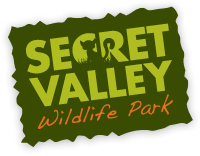 Our porcupines love to chase their keepers around their enclosure! It always startles new keepers but its all fun for Asha and Ayo who just want a scratch and some apple.
Our porcupines love to chase their keepers around their enclosure! It always startles new keepers but its all fun for Asha and Ayo who just want a scratch and some apple.
Origin- Crested porcupines are found in north and sub-Saharan Africa, mainland Italy and Sicily. They mainly inhabit Mediterranean forests and scrubland.
Lifespan- Up to 15 years in the wild and up to 20 years in captivity
Diet- The crested porcupine’s diet consists mainly of bulbs, roots, tubers, rhizomes, and bark. They will also eat agricultural crops, and occasionally will eat insects, small vertebrates, and some carrion. They commonly chew on bones from carrion to sharpen their teeth, and to provide a source of calcium, phosphorus, and sodium.
Description- The crested porcupine is one of the largest rodents in the world, weighing up to 30kg, and growing nearly up to a meter in length.
Their distinguishing feature is their long quills. The quills are a modified hair, made from keratin They are hollow and stiff, with a sharp, barb covered, point at the end.
The quills are usually black or brown and white in colour and can be up to 35cm long. If threatened they will run at speed backwards towards the threat, embedding the quills deep into them, often causing serious injury. It is a common myth that the porcupine can fire its quills out, however, just like hair, they will fall out regularly.
Like all rodents, the incisor teeth grow constantly and need to be worn down
Crested porcupines are social animals and live in small family groups with an adult pair and their offspring. The communicate using their body language and using a variety of vocalizations. They search for food alone during the night and return to their den in the morning.
Porcupines can run faster than humans and are good swimmers.
Conservation- Although not classed as endangered in any way, numbers in North Africa and Morocco are decreasing at a fast rate due to hunting.
Natural predators for the porcupine include lions, leopards, hyenas and some large birds of prey, although it is rare for them to succeed in killing a porcupine due to their spiky defence system.
The biggest threat to the porcupine is humans, often illegally trapping and killing them for meat, and for their valuable quills. The quills have many uses, including traditional medicine, talismans, fishing lure, and ornaments. The meat is also a local delicacy in many parts of their range.
Due to their taste for agricultural crops such as pumpkin, corn, sweet potato, and young cotton plants, they are often seen as a pest, and are persecuted by farmers. Some farmers will illegally control porcupine populations by lacing food with poisoned bait.







 .
.